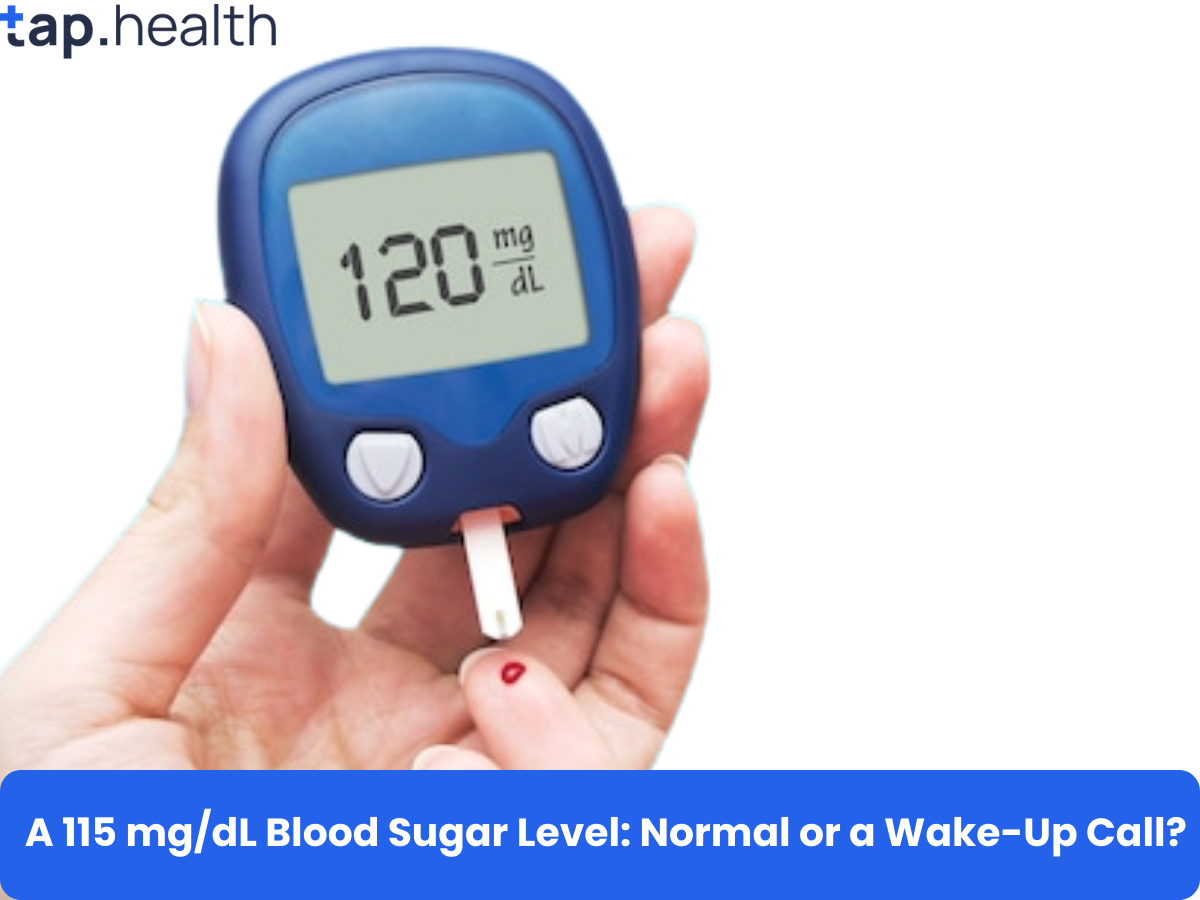Table of Contents
- Understanding Metabolic Syndrome: A Complete Guide
- Metabolic Syndrome Symptoms: Recognizing the Warning Signs
- Causes of Metabolic Syndrome: Risk Factors and Prevention
- What is Metabolic Syndrome? Diagnosis and Treatment Options
- Managing Metabolic Syndrome: Lifestyle Changes and Dietary Advice
- Frequently Asked Questions
Are you experiencing unexplained weight gain, fatigue, or high blood pressure? You might be concerned, and rightly so. Millions struggle with metabolic syndrome, a cluster of conditions that significantly increase your risk of heart disease, stroke, and type 2 diabetes. This blog post is dedicated to helping you understand metabolic syndrome: symptoms, causes, and what you can do to improve your health and well-being. We’ll break down the key components, explore potential risk factors, and most importantly, discuss actionable steps you can take to manage or even reverse this concerning condition. Let’s get started on your path to better health!
Understanding Metabolic Syndrome: A Complete Guide
Metabolic syndrome is a sneaky cluster of conditions—high blood sugar, extra belly fat, and high blood pressure—that significantly raises your risk of heart disease, stroke, and type 2 diabetes. The global cost of diabetes alone is staggering—a whopping $760 billion annually (source)—highlighting just how crucial it is to understand and manage this often-overlooked syndrome. This is especially true in India and other tropical countries, where lifestyle and diet play a huge role. As we age, managing these conditions becomes even more vital, making it essential to understand the unique challenges involved. For some helpful advice, check out our guide on Managing Diabetes as You Age: Challenges and Solutions.
Symptoms and Causes
Symptoms include increased waistline, high triglycerides (those unhealthy fats), low “good” HDL cholesterol, high blood pressure, and high fasting blood sugar. These often creep up slowly due to a mix of unhealthy habits, like a poor diet and lack of exercise, and genetics. In India and tropical regions, the ready availability of processed foods packed with sugar and unhealthy fats adds fuel to the fire.
What You Can Do
Lifestyle changes are key! Focus on a diet rich in fruits, vegetables, and whole grains—the kind common in your area. Cut back on refined carbs and saturated fats. Regular physical activity, even a brisk daily walk, makes a world of difference. In tropical climates, try to exercise during cooler parts of the day. And remember, a healthcare professional can provide personalized advice and monitor your progress.
Regional Considerations
For those in India and tropical regions, incorporating traditional cooking methods and locally sourced ingredients can be incredibly beneficial. Think lentils, spices, and the vibrant array of fruits and vegetables readily available. This offers both nutritional value and a connection to your cultural heritage. Early detection and management are key to preventing serious complications; talk to your doctor to assess your risk and build a personalized plan.
Metabolic Syndrome Symptoms: Recognizing the Warning Signs
Metabolic syndrome is a sneaky cluster of conditions—high blood pressure, excess belly fat, high blood sugar, and unhealthy cholesterol levels—that significantly raises your risk of heart disease, stroke, and type 2 diabetes. Catching it early is crucial, especially in regions like India and other tropical areas where lifestyle plays a huge role in overall health. Think of it this way: a government report highlighted that up to 80% of type 2 diabetes cases could be delayed or even prevented with simple lifestyle changes!
Learn more about preventing Type 2 diabetes through lifestyle changes. Since type 2 diabetes is a major player in metabolic syndrome, understanding its early signals is key. For more on early diabetes symptoms, check out this article: 10 Early Signs and Symptoms of Diabetes?
Common Symptoms to Watch For
- High blood pressure (hypertension): This silent threat often goes unnoticed. Many people in India and tropical countries aren’t aware of their blood pressure, leading to late diagnosis. Imagine it like a slow leak in a tire – you might not notice until it’s flat.
- Increased abdominal fat: A growing waistline is a significant red flag. Think about the typical diets in many parts of these regions – often rich in delicious but calorie-dense foods. This can easily lead to excess belly fat.
Other Warning Signs
- High blood sugar (hyperglycemia): You might notice increased thirst, frequent bathroom trips, or unexplained weight loss. It’s your body screaming for balance!
- High triglycerides and low HDL cholesterol (“good” cholesterol): These sneaky culprits are often only revealed through routine blood tests. Unfortunately, these imbalances are common in many tropical regions, often linked to diet and lack of physical activity.
Taking Action: Steps for Better Health
Regular check-ups are your best friend. Monitor your blood pressure and blood sugar. Embrace a balanced diet packed with fresh fruits, vegetables, and whole grains. Think vibrant salads and hearty lentil soups instead of heavily processed foods and sugary drinks, which are so prevalent in many cuisines. Even small amounts of exercise—a daily walk, for example—can make a massive difference. And finally, don’t hesitate to see a doctor for personalized advice. They can help you navigate the specific challenges and opportunities relevant to your region.
Causes of Metabolic Syndrome: Risk Factors and Prevention
Understanding the Roots of Metabolic Syndrome in India and Tropical Countries
Metabolic syndrome – that sneaky cluster of conditions upping your risk for heart trouble, strokes, and type 2 diabetes – is heavily influenced by what we eat and how we live. In India and other tropical areas, some risk factors are especially common. Think of the increasingly sedentary lifestyles in our bustling cities, coupled with a ready supply of processed foods packed with unhealthy fats and sugars. It’s a recipe for trouble. Research shows a powerful link between diet and metabolic syndrome; for example, daily sugary drinks boost your diabetes risk by a whopping 26%!
Lifestyle and Dietary Factors: Key Contributors
While genes play a part, our daily choices often matter more. Many traditional diets in India and tropical regions include a lot of refined carbohydrates, which can lead to insulin resistance – a key player in metabolic syndrome. Combine that with limited physical activity and the easy access to cheap, high-calorie processed foods, and you get weight gain and increased belly fat – both major metabolic syndrome warning signs. Understanding the connection between diabetes and obesity is crucial to grasping the whole picture. (Understanding the Link)
Prevention Strategies for South Asian Populations
The good news? Prevention is key! Aim for regular physical activity – even a 30-minute walk daily makes a difference. Focus on whole, unprocessed foods: fresh fruits, vegetables, and lean protein. Cut back on sugary drinks and processed foods. Smart swaps are vital: find healthy replacements for traditional high-sugar snacks and embrace nutrient-rich local alternatives. Regular checkups are also essential for early detection and management.
Taking Control: A Call to Action
Making mindful food and lifestyle choices is your strongest weapon against metabolic syndrome. Small, smart changes can make a big difference to your health and well-being. Talk to your doctor for personalized advice tailored to you and your background.
What is Metabolic Syndrome? Diagnosis and Treatment Options
Understanding Metabolic Syndrome
Metabolic syndrome isn’t a single disease, but a cluster of risk factors that significantly raise your chances of heart disease, stroke, and type 2 diabetes. Think of it like this: several unhealthy habits all working together to create a bigger problem. These factors include high blood sugar (hyperglycemia), excess belly fat (abdominal obesity), high blood pressure (hypertension), and high cholesterol (hyperlipidemia). It’s a growing concern globally, particularly prevalent in regions like India and other tropical countries where lifestyle changes are often dramatic.
The staggering statistic that a whopping 50% of diabetes cases globally go undiagnosed (Source: IDF Diabetes Atlas) underscores the urgent need for awareness and proactive health management. Since type 2 diabetes is a central player in metabolic syndrome, understanding its related conditions is key.
For a contrasting perspective, you might find this article interesting: Which Condition is Not Usually Associated with Type 2 Diabetes?
Diagnosis and Treatment
Diagnosing metabolic syndrome is relatively straightforward, usually involving a simple blood test and measuring your waist circumference. Early detection is incredibly important because managing the syndrome effectively can dramatically reduce your risk of serious complications down the line.
Treatment often focuses on lifestyle changes tailored to you. For people in India and tropical areas, this might mean incorporating traditional dietary wisdom – think fresh, locally-sourced fruits and vegetables – alongside regular physical activity adapted to the climate.
Actionable Steps for Indian and Tropical Climates
- Eat the Rainbow: Prioritize a diet packed with fruits, vegetables, and whole grains that are common and readily available in your region.
- Move Your Body: Regular physical activity is crucial. Even short bursts of activity throughout the day can make a difference. Consider yoga or other traditional fitness practices.
- Seek Professional Guidance: A consultation with your doctor or a qualified healthcare professional is vital. They can provide personalized advice, regular check-ups, and make any necessary adjustments to your plan as you go.
Remember, early diagnosis and a proactive approach are your best weapons in fighting metabolic syndrome and maintaining a healthier life.
Managing Metabolic Syndrome: Lifestyle Changes and Dietary Advice
Metabolic syndrome – that sneaky cluster of conditions raising your risk of heart disease, stroke, and type 2 diabetes – is a global concern, impacting many in India and other tropical countries. Tackling it effectively isn’t about drastic measures; it’s about making sustainable lifestyle shifts.
Dietary Adjustments for Metabolic Syndrome
Smart eating is key. For many, managing carbohydrate intake is the starting point. Think of it like this: instead of loading up on a big plate of sugary rice, aim for roughly 45-60 grams of carbs per meal. This helps keep your blood sugar steady – crucial for managing metabolic syndrome. Swap refined carbs (think white bread and sugary sodas) for complex carbs found in whole grains, fruits, and vegetables. These provide sustained energy and are packed with nutrients.
Lifestyle Modifications in Tropical Climates
Living in a hotter climate like India presents unique challenges. Staying hydrated is vital. Dehydration can worsen symptoms, so sip water consistently throughout the day. Regular exercise is also non-negotiable, but tailor it to the weather. Early morning or evening walks, yoga, or a refreshing swim are excellent options.
Actionable Steps for Indian & Tropical Regions
Focus on fresh, local produce! Indian and tropical regions are bursting with fiber and antioxidant-rich fruits and vegetables. Minimize sugary drinks – they’re often hidden culprits. Practice mindful eating and portion control; it’s about savoring your food, not overdoing it. And most importantly: consult a nutritionist or doctor. They can craft a plan perfectly suited to your needs and your region’s unique food landscape. Taking these steps can make a huge difference in your health.
For more on a related condition, check out our article on 5 Easy Lifestyle Changes to Manage Type 2 Diabetes.
Frequently Asked Questions on Metabolic Syndrome
Q1. What is Metabolic Syndrome and why is it a concern?
Metabolic syndrome is a cluster of conditions (high blood sugar, excess belly fat, high blood pressure, unhealthy cholesterol) increasing the risk of heart disease, stroke, and type 2 diabetes. It’s a growing concern globally, particularly in India and tropical regions due to lifestyle and dietary factors, and carries a significant financial burden.
Q2. What are the common symptoms and how can I recognize them?
Symptoms include increased waistline, high triglycerides, low ‘good’ HDL cholesterol, high blood pressure, and high fasting blood sugar. These often develop gradually. Regular check-ups, including blood tests, are crucial for early detection.
Q3. How can I prevent or manage Metabolic Syndrome through lifestyle changes?
Lifestyle changes are key! Focus on a balanced diet rich in fruits, vegetables, and whole grains, limiting refined carbs and saturated fats. Regular physical activity is essential. In tropical climates, exercise during cooler times. Consult a healthcare professional for personalized advice.
Q4. What dietary adjustments and lifestyle modifications are particularly relevant for people in India and tropical regions?
Incorporate traditional cooking methods and locally sourced ingredients. Prioritize fresh, regional produce. Minimize sugary drinks and processed foods. Adapt physical activity to the climate (early morning/evening exercise).
Q5. What are the next steps I should take if I am concerned about Metabolic Syndrome?
Schedule a consultation with your doctor for an assessment. They can conduct tests to diagnose the syndrome and create a personalized management plan that includes dietary and lifestyle changes tailored to your region and circumstances.



